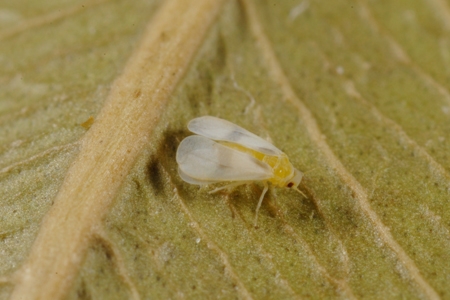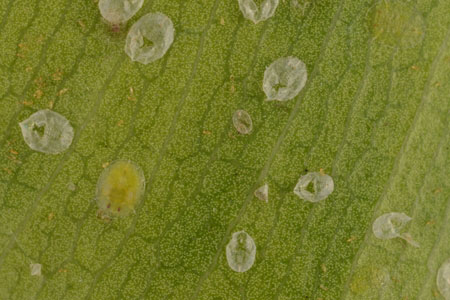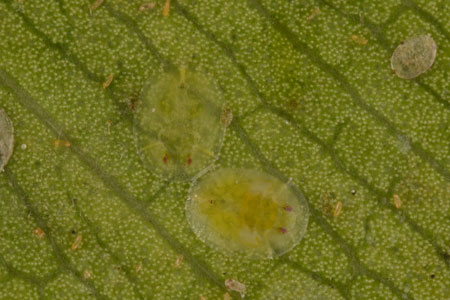Home » Bugs » Lawn Pests »
Active Seasons



Fig Whitefly and Ficus Whitefly Appearance and Size Facts
A new pest has come to invade the yards and trees of south Florida homeowners. These pesky invaders are known as fig whiteflies, also commonly referred to as Ficus whiteflies, and are often found feeding on ficus leaves and the juice of your plants. Although these nasty critters can cause serious damage to your home and plants, it doesn’t have to be this way. Let our team at Hulett Environmental Services guide you through how to identify and get rid of a fig whitefly infestation on your Ficus.
To get started, here are some basic characteristics of the average fig whitefly:
- Body: Yellow body and white wings
- Size: Approximately 1/16 of an inch in length
- Mouth: Has a needle-like mouthpart for feeding on plants
- Flight: Adults can fly when provoked
- Order: Belongs to Hemiptera insect order alongside mealybugs and scales
Distinguishing Fig Whiteflies From Other Lawn Pests
One key factor that separates the fig whitefly from other lawn pests is its mouth. While some lawn pests like the sod webworm damage turf by their chewing mouthparts, the Ficus whitefly with its needle-like mouthpart, can suck juices out of plants, causing serious damage to the health of your plants. While it’s difficult to identify a fig whitefly infestation alone, you can call Hulett for help on your residential and commercial properties.
We offer pest control for fig whiteflies in the following locations and their surrounding areas:

Behavior and Habitat of Fig Whiteflies
There are three stages to the life cycle of a fig whitefly: egg, nymph, and adult. Females lay eggs on the underside of leaves until they hatch into nymphs. Nymphs then proceed to wander around the leaf until they can feed and grow into adults. The typical life span of a fig whitefly in warm weather is approximately a month.
As they make their home and feed on plants, they leave behind honeydew that attracts other insects and pests, such as ants. Although fig whiteflies aren’t necessarily harmful to humans, they can cause south Florida homeowners’ massive headaches with damage to their plant life and the risk of attracting other pests.

Signs of Infestation of Fig Whiteflies
Common signs of a fig whitefly infestation are directly related to trees and plants around your house. Fig whiteflies can severely damage host plants by sucking juices through their mouthparts. Among the key indicators of an infestation are leaves dropping, wilting, yellowing, stunting, and even death.

Tips for Prevention of Fig Whiteflies
If you have a ficus plant around your home, monitor it for early signs of an infestation. If you trim or hedge any of your plants, make sure the clippings do not leave your property. If you do remove them, bag them to reduce the chance of spreading the insects.
Getting Rid of Ficus Whiteflies
As an invasive species, the Ficus whitefly is notoriously difficult to exterminate and prevent. When you need to effectively remove fig whiteflies from your home or business, go to professional pest control services for help. The experts at Hulett can properly identify an infestation and help resolve your fig whitefly problem once and for all.
Effective Fig Whitefly Control Solutions
Although it’s a frightening sight to see your plants overrun by fig whiteflies, you don’t have to fight this battle alone. All you have to do is just call Hulett for the best Ficus whitefly control services in south Florida. With over 50 years of experience under our belts, you can count on us to remove and prevent fig whiteflies from overtaking your home’s plants. Schedule your free inspection online or give us a call today!



